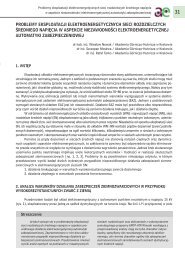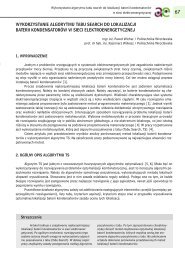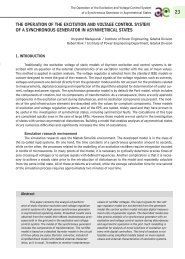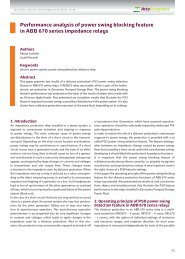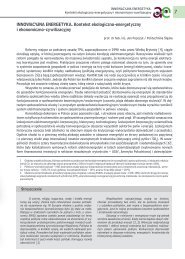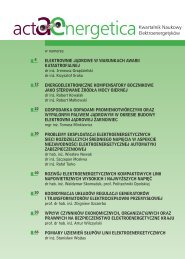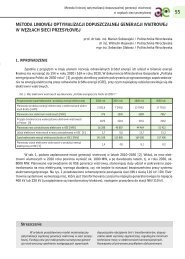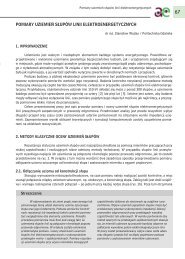supercapacitors as energy storage devices - Acta Energetica
supercapacitors as energy storage devices - Acta Energetica
supercapacitors as energy storage devices - Acta Energetica
Create successful ePaper yourself
Turn your PDF publications into a flip-book with our unique Google optimized e-Paper software.
Supercapacitors <strong>as</strong> Energy Storage Devices75where R stands for the device’s resistance. 2UP 4 REquation (4) indicates that incre<strong>as</strong>e of <strong>energy</strong> accumulated in a capacitor can be achieved by:1) capacitance incre<strong>as</strong>e, which may be realized by:a. incre<strong>as</strong>ing electrode active surface,b. decre<strong>as</strong>ing plate separation,c. incre<strong>as</strong>ing relative dielectric permittivity of the medium2) voltage incre<strong>as</strong>e.According to the equation (5) power can be incre<strong>as</strong>ed by:1) voltage incre<strong>as</strong>e2) resistance decre<strong>as</strong>e.When designing a device we can influence the useful power level by appropriate selection of materials,electrode geometry and electrochemical stability of the electrolyte.Electrochemical capacitors <strong>as</strong> <strong>energy</strong> <strong>storage</strong> and conversion <strong>devices</strong> can be placed between electrolyticcapacitors 2 and batteries. This is illustrated by the Ragone diagram (fig. 4).(5)Specific power [W/kg]ElectrolytecapacitorElectrochemicaldouble-layercapacitorAcid-head cellsCadmium nickel and nickel-metalhydride cellsUltracapacitorLithium-ion batteriesFuelcellsSpecific <strong>energy</strong> [Wh/kg]Fig. 4. Ragone diagram for various electrochemical <strong>devices</strong> [8, 9]Time constants (RC) (d<strong>as</strong>hed lines in the diagram) indicate that the charging/discharging time for reversiblegalvanic cells is considerably longer than corresponding times for electrochemical capacitors.Batteries, just like low-temperature fuel cells, display low power density when compared to electrolyticcapacitors. At the same time batteries have higher <strong>energy</strong> density than capacitors. Using both batteries andelectrochemical capacitors in the same device can improve its operational parameters. The number of charging/dischargingcycles for electrochemical capacitors is much higher than for batteries. This results from thefact that in the cells new ph<strong>as</strong>es are created during the charge transfer process and difficulties resulting fromside effects occur. An electrochemical capacitor uses mainly electrostatic charge, so from a theoretical point ofview there is no limit for the number of charging/discharging cycles.2 In contr<strong>as</strong>t to electrochemical capacitors, electrolytic capacitors (with dimensions of several centimetres) have very small capacitances, me<strong>as</strong>uredin micro- or nanofarads. Electrolytic capacitors owe their name to the method of separator creation between the plates. Plates of electrolyticcapacitors are made of metals like aluminium, tantalum, titanium, niobium, etc. Plates are separated with a thin (10…100 nm) film of an oxide of therespective metal. This film occurs <strong>as</strong> a result of anodic polarization of both plates. Electrolytic capacitors should not be confused with electrochemicalcapacitors.



